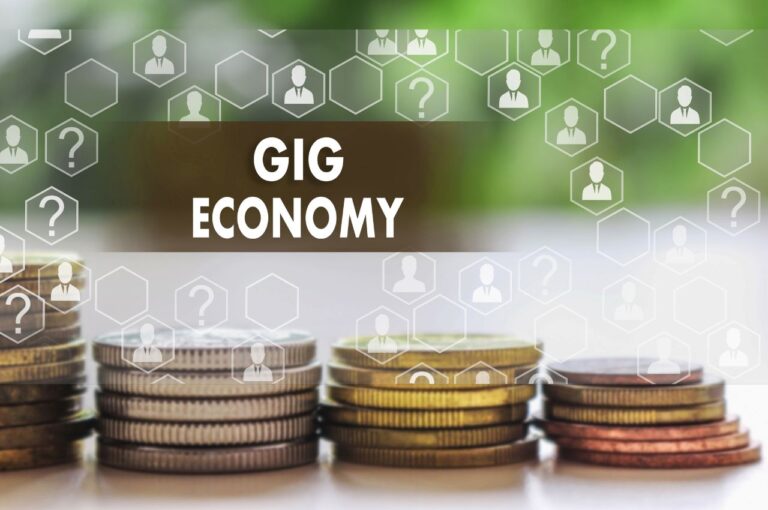Listen to the article
One famous quote by Nelson Mandela captures the essence of SDG 10. It says, As long as poverty, injustice and gross inequality persist in our world, none of us can truly rest. By resolving the inequalities in our society, we will have a more inclusive economy where everyone, even those with disabilities, is economically empowered.
Today’s article focuses on SDG 10–Reduced Inequalities Within and Between Countries and the role of emerging technology in accelerating it.
Why Reduce Inequalities?
Inequalities hinder poverty reduction and destroy people’s sense of fulfilment and self-worth (UN). It is not possible to achieve sustainable development if we exclude some people from opportunities to better their lives. The inequalities we face in the world today are lack of access to healthcare, quality education, opportunities for migrants and refugees, lack of jobs for the youth, among others.
Before the COVID-19 pandemic, income inequality was falling in some countries. The Gini index fell in 38 out of 84 countries. For every 100,000 persons, 311 are refugees. Remittance costs need to come down from 6.5% to the target of 3%. In 2020, 4,186 deaths and disappearances were recorded on migratory routes worldwide. According to these statistics by the UN, we need a transformative change agent to accelerate the achievement of SDG 10.
The Role of Emerging Technology in Reducing Inequalities
Technology has the potential to play a significant role in reducing inequalities by providing solutions that can address some of the most pressing issues related to inequality. According to the UN, governments and other stakeholders need to ensure that the benefits of frontier technologies reach the greatest number of people, particularly the most vulnerable and those further behind. That will bridge the inequality gap within and between countries.
Below are 3 Examples Showing How Emerging Technology Will Reduce Inequalities Worldwide
1. Digital Work for the Youth and Those With Disabilities
The digital economy has created new jobs and changed how we work and live. Businesses have created new products and services, and many are outsourcing some of their processes to workers on digital platforms. This gives access to the youth and disadvantaged in society to find work online.
According to Banyan Global, some platforms offer microwork tasks, which are broken down into microtasks that require seconds or minutes to complete. Workers receive a small payment for each completed task. The barriers to entry are lower than freelancing, making microwork attractive to individuals with no specialized skills.
Example:
Enablecode is a social enterprise in Vietnam that equips the youth and disadvantaged with modern cognitive skills to perform human intelligence tasks on Amazon Mechanical Turks (a microwork site). It has partnered with Amazon, World Bank, and UNICEF to bring the project to life and many youths with disabilities have benefited.
2. Big Data Analytics to Reduce Inequalities in the Tourism Sector
By collecting data from its population, a country can make informed decisions on resource allocation, economic opportunities for its disadvantaged population, or identify inequality gaps. One sector that can benefit from big data is tourism.
In 2020, 62 million jobs were lost in the tourism sector globally and this affected many countries. Domestic visitor spending decreased by 45% and international visitor spending decreased by an unprecedented 69.4% (World Travel & Tourism Council). Big data analytics will help countries make sense of complex travel data to explore new markets and rebrand their tourist packages.
Example:
ForwadKeys is a company that has developed the most comprehensive database of air travel bookings. One of its biggest beneficiaries is the Maldives ministry of tourism, which faced challenges in identifying potentially untapped source markets to compensate for insufficient business from its source markets of Germany and the US. This was because of the COVID-19 restrictions that saw many airlines grounded.
ForwardKeys offered the Maldives its Actual Air Tickets Dataset, and they identified a rise in 3-4 passengers (families) flying business and first-class. They shared the news with hoteliers, tour operators and promotional teams. This enabled the Maldives to brand itself as a destination for affluent families from Russia, Ukraine and the UAE instead of honeymooning couples within a short time.
3. Satellite Technology to Scan Migration Routes
According to the UN, 4,186 deaths and disappearances were recorded on migratory routes worldwide in 2020. Governments and other stakeholders can promote safe migration for millions of people who have left their homes to seek better lives abroad.
One emerging technology used to achieve this target is satellite technology. Governments and other agencies use satellites to monitor migration flows, refugee camp size, and the movement of boats on migration routes.
Example:
In 2015, Frontex used satellite imagery to detect and rescue 370 people on board three inflatable boats off the coast of Libya. It sent the information to the Italian authorities, and the rescued migrants were safely brought to the Italian shores.
Technology can bring significant changes in migration policies and practices in the following ways: improving border management, enhancing data collection and analysis, facilitating communication and information exchange, supporting integration and inclusion, etc.
Conclusion
It is not possible to attain sustainable development in the world by excluding some people from the efforts to make the world a better place. We can use emerging technologies in the right way to transform the lives of all people in a sustainable way and leaving no one behind. Emerging technology can expedite the achievement of SDG 10 and ensure the gap of inequalities within and between countries significantly reduces.
We can help you overcome your technological challenges and gain a competitive advantage in your industry. Contact us today to learn more.



